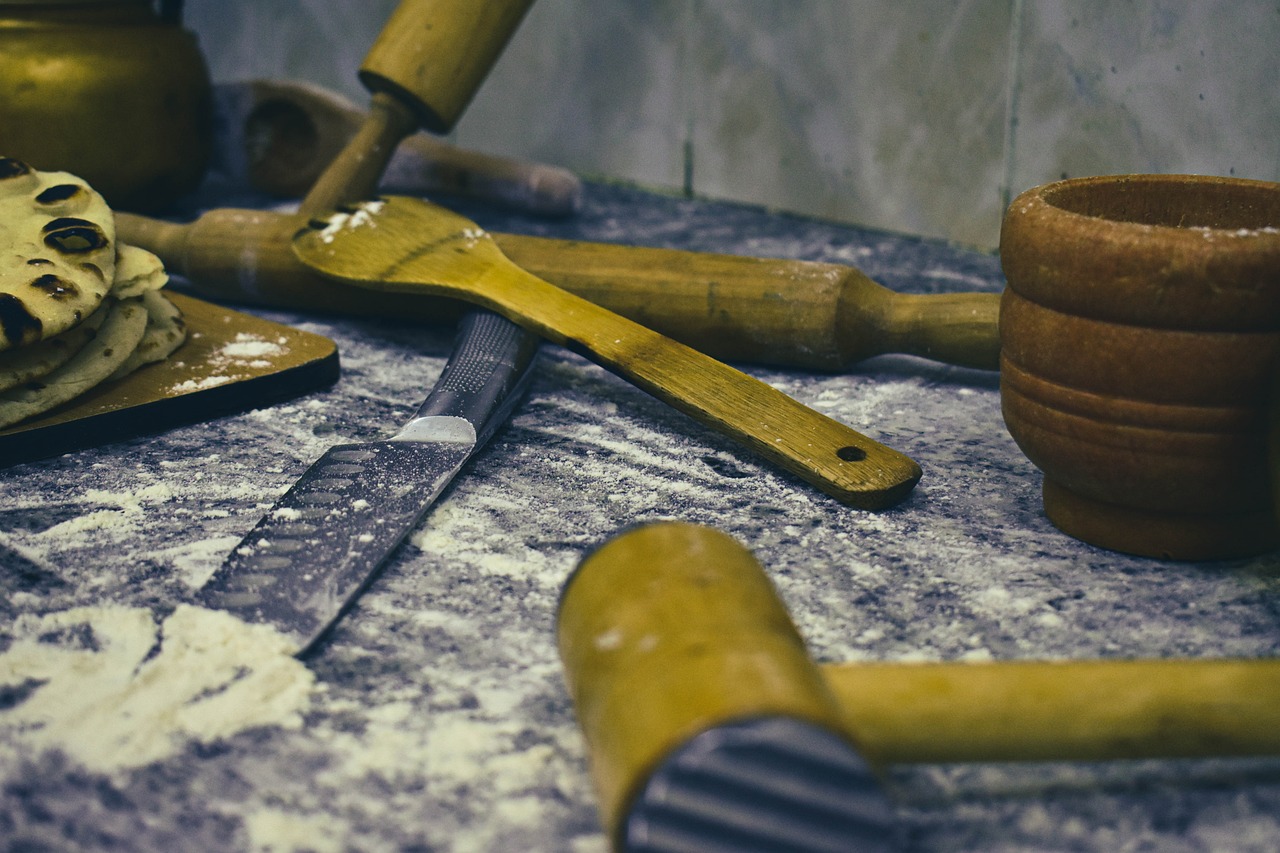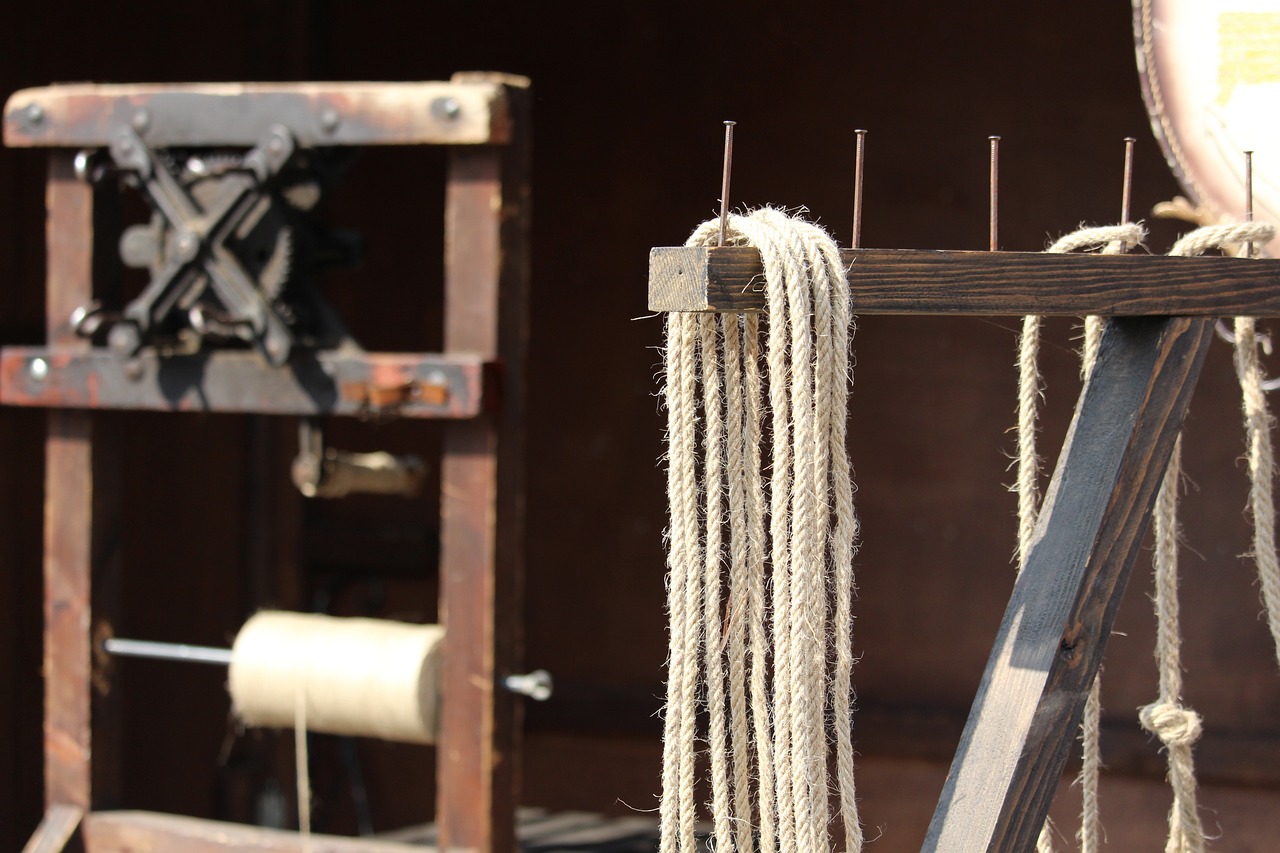Creating Cherished Memories with Signature Quilts
Have you ever thought about how a simple piece of fabric can hold the power to evoke memories and emotions? Signature quilts are not just blankets; they are heartfelt keepsakes that tell stories of love, family, and shared experiences. Imagine wrapping yourself in a quilt that not only keeps you warm but also brings back cherished moments from your past. This article explores the art and significance of creating signature quilts, highlighting their emotional value, crafting techniques, and ways to personalize them for lasting memories.
Signature quilts serve as a canvas for our memories, capturing the essence of life's most precious moments. Each stitch and patch represents a connection to the people we love and the experiences we’ve shared. They are more than just decorative items; they are unique forms of storytelling that can be passed down through generations. Whether it's a quilt made for a wedding, a family reunion, or a memorial, these creations hold deep emotional significance. They remind us of the bonds we share and the stories that shape our lives.
When embarking on the journey of creating a signature quilt, selecting the right fabrics is crucial. You want materials that not only look good but also tell a story. Consider the following factors when choosing your fabrics:
- Durability: Will it withstand the test of time?
- Texture: Does it feel good against the skin?
- Color Schemes: Do the colors resonate with the memories you wish to encapsulate?
By carefully considering these aspects, you can ensure that your quilt is both visually appealing and lasting, making it a true treasure.
Each type of fabric carries its own unique qualities and meanings. For example, cotton is popular for its breathability and ease of care, while flannel adds a cozy warmth, perfect for chilly nights. Silk, on the other hand, brings an element of luxury and elegance. The choice of fabric can greatly influence the quilt's overall feel and the memories it conveys, making it essential to choose wisely.
To ensure your signature quilt withstands the test of time, opting for durable fabrics is key. Fabrics like cotton and polyester blends are ideal for quilts that will be used regularly or displayed prominently. They maintain their color and integrity, allowing your cherished memories to remain intact for years to come.
Colors evoke emotions and memories in profound ways. Selecting a color scheme that reflects the experiences or themes you want to highlight can enhance the quilt's emotional value and aesthetic appeal. For instance, soft pastels may evoke feelings of tranquility, while vibrant hues can bring energy and joy. The right colors can turn a quilt into a tapestry of your life's most cherished moments.
Personalization is what truly makes a signature quilt special. Options range from embroidered names to unique designs that reflect personal stories. Incorporating these personal touches not only enhances the quilt's aesthetic appeal but also deepens its connection to the memories it represents. Think of it as adding a sprinkle of magic that transforms a simple quilt into a treasured family heirloom.
Understanding various quilting techniques is essential for creating a signature quilt that stands out. Techniques such as patchwork, appliqué, and different quilting styles can greatly influence the quilt's design and overall impact. Each technique offers a unique way to tell your story through fabric.
Patchwork is a beloved technique for creating quilts, allowing for the incorporation of various fabric pieces. This method beautifully showcases different memories while creating a cohesive design. Think of it as a puzzle where each piece holds a story, coming together to form a beautiful picture of your life's journey.
Appliqué and embroidery techniques add depth and personalization to quilts. These methods enable you to incorporate names, dates, or special motifs, enhancing the quilt's sentimental value. Imagine a quilt adorned with the names of loved ones or special dates, creating a beautiful reminder of the connections that matter most.
Once crafted, displaying and preserving your signature quilt is essential for maintaining its beauty. Proper care ensures that your cherished memories remain intact for years to come. Think of your quilt as a piece of art that deserves to be showcased.
Displaying your signature quilt can enhance your home decor while showcasing your memories. Consider creative ways to hang or drape your quilt to make it a focal point in your space. A quilt rack, a decorative ladder, or even framing it can turn your quilt into a stunning piece of art that tells your story.
Proper care and maintenance are vital for preserving the quilt's quality. Regular cleaning, appropriate storage, and avoiding direct sunlight can help maintain the quilt's vibrant colors and fabric integrity. Treat your quilt with the same love and care you would give to any treasured possession.
Q: What is a signature quilt?
A: A signature quilt is a quilt that incorporates personal touches, such as names, dates, or unique designs, to represent special memories and connections.
Q: How do I choose the right fabrics for my quilt?
A: Consider durability, texture, and color schemes that resonate with the memories you wish to encapsulate. Fabrics like cotton and polyester blends are great for longevity.
Q: What techniques can I use to personalize my quilt?
A: Techniques such as appliqué and embroidery allow you to add names, dates, or special motifs, enhancing the quilt's sentimental value.

The Emotional Value of Signature Quilts
Signature quilts are not just pieces of fabric stitched together; they are heartfelt keepsakes that encapsulate memories and emotions, weaving together the stories of our lives. Imagine a quilt that tells the tale of family gatherings, celebrations, and cherished moments, each patch representing a unique experience or sentiment. These quilts serve as a tangible connection to our past, allowing us to relive the warmth of loved ones and the joy of shared experiences.
When you think about it, a signature quilt is like a family tree made of fabric. Each square can represent a different branch of your family or a significant event, making it a living history book. Whether it’s a quilt made for a wedding, a milestone birthday, or a memorial, the emotional value is profound. It’s as if each stitch carries the laughter, tears, and love of those who contributed to it, creating a rich tapestry of life.
Moreover, the act of creating a signature quilt can be a therapeutic process. As you select fabrics, design patterns, and stitch together memories, you engage in a form of storytelling that can be both cathartic and fulfilling. It’s a chance to reflect on the past, celebrate the present, and look forward to the future, all while creating something beautiful and meaningful.
Signature quilts also foster connections between generations. Imagine a grandmother passing down her quilt-making skills to her granddaughter, teaching her not just how to sew, but also the stories behind each fabric piece. This transfer of knowledge and tradition enriches family bonds and creates a shared legacy that can be cherished for years to come.
In essence, the emotional value of signature quilts lies in their ability to serve as a canvas for our memories. They are more than just decorative items; they are vessels of love, connection, and shared history. As you wrap yourself in a signature quilt, you’re not just keeping warm; you’re enveloped in the stories and sentiments of those you cherish the most. Isn’t that a beautiful thought?
- What materials are best for making a signature quilt? Cotton and polyester blends are ideal due to their durability and ease of care.
- Can I include photographs in my signature quilt? Yes, photo transfer fabrics allow you to incorporate images into your quilt.
- How do I care for my signature quilt? Regular cleaning, avoiding direct sunlight, and storing it properly will help maintain its quality.

Choosing the Right Fabrics
When it comes to crafting a signature quilt, the choice of fabric is not just a matter of aesthetics; it’s about creating a lasting legacy. The right fabric can transform a simple quilt into a cherished keepsake that tells a story, evokes emotions, and brings back memories. Imagine wrapping yourself in a quilt that not only looks beautiful but also feels like a warm hug from the past. So, how do you choose the right fabrics for your masterpiece?
First and foremost, consider the durability of the fabrics you select. A quilt is meant to be used, snuggled under, and even displayed, so opting for materials that can withstand the test of time is essential. Fabrics like cotton and polyester blends are excellent choices due to their strength and ease of care. They hold up well to washing and wear, ensuring that your quilt remains vibrant and intact for years to come. Think of it as investing in a piece of art that you want to enjoy daily!
Next, pay attention to the texture of the fabrics. Different textures can evoke different feelings and experiences. For instance, soft flannel can remind you of cozy winter nights, while smooth silk might bring to mind special occasions. Mixing textures can add depth to your quilt, creating a tactile experience that enhances its emotional value. Imagine running your fingers over the different fabrics, each one whispering a memory or a moment in time.
Color schemes also play a crucial role in your fabric selection. Colors can evoke powerful emotions and memories, so think about the experiences you want to highlight. For example, warm colors like reds and oranges might reflect joyful moments, while cool colors like blues and greens could represent calm and serenity. When selecting your color palette, consider creating a mood board to visualize how different colors and patterns will come together. This can help ensure that your quilt not only tells a story but also looks stunning.
Here’s a quick overview of some popular fabric types and their qualities:
| Fabric Type | Durability | Texture | Color Variety |
|---|---|---|---|
| Cotton | High | Soft | Wide range |
| Flannel | Medium | Warm and fuzzy | Limited |
| Silk | Low | Smooth | Rich and vibrant |
| Polyester | High | Varies | Wide range |
In summary, choosing the right fabrics for your signature quilt is a blend of practicality and creativity. Think about the stories you want to tell, the emotions you wish to evoke, and how you want the quilt to feel. By carefully selecting durable, textured, and color-appropriate fabrics, you’ll create a quilt that not only looks beautiful but also serves as a timeless reminder of cherished memories.

Fabric Types and Their Significance
When diving into the world of signature quilts, understanding fabric types and their significance is crucial. Each fabric not only contributes to the quilt's visual appeal but also carries its own unique story and emotional weight. For instance, cotton is a staple in quilting due to its durability and versatility. It comes in a myriad of colors and patterns, making it easy to find something that resonates with the memories you wish to encapsulate. Cotton quilts can be used daily or displayed as treasured keepsakes, creating a wonderful balance between functionality and sentimentality.
On the other hand, flannel offers a softer, cozier feel, perfect for those chilly nights when you want to snuggle up with a quilt that feels like a warm hug. Its texture not only enhances comfort but also evokes feelings of warmth and security, making it an ideal choice for quilts meant to represent family gatherings or cherished moments. Flannel is particularly popular for quilts intended for children, as it provides both comfort and durability.
Then there's silk, a fabric that exudes elegance and luxury. While silk quilts may not be as practical for everyday use, they certainly make a stunning statement piece. Imagine a silk signature quilt showcasing intricate designs, perhaps embroidered with names or dates that hold special meaning. The sheen of silk can elevate the quilt from a simple blanket to a work of art, making it a perfect gift for weddings or anniversaries.
To give you a clearer picture, here’s a quick comparison of these fabric types:
| Fabric Type | Durability | Texture | Best For |
|---|---|---|---|
| Cotton | High | Soft and breathable | Everyday use, keepsakes |
| Flannel | Medium | Soft and warm | Cozy quilts, children's quilts |
| Silk | Low | Luxurious and smooth | Special occasion quilts |
Ultimately, the choice of fabric will depend on the quilt's intended use and the memories you want to preserve. By selecting the right fabric, you can create a signature quilt that not only looks beautiful but also carries the essence of the moments it represents. So, whether you’re opting for the everyday charm of cotton, the cozy embrace of flannel, or the luxurious touch of silk, each fabric type plays a significant role in crafting a quilt that tells your unique story.
- What is a signature quilt? A signature quilt is a personalized quilt that incorporates names, dates, or messages, often created for special occasions like weddings or family reunions.
- How do I choose the right fabric for my quilt? Consider the quilt's purpose, desired texture, and color scheme. Cotton is great for everyday use, while silk adds a touch of luxury.
- Can I wash my signature quilt? Yes, but it's essential to follow care instructions specific to the fabric to ensure longevity.
- What techniques can I use to personalize my quilt? Techniques like appliqué, embroidery, and patchwork allow for unique designs and personal touches.

Durable Fabrics for Longevity
When it comes to crafting a signature quilt that stands the test of time, the choice of fabric is paramount. You want a quilt that not only looks stunning but also withstands the wear and tear of everyday life. Think of it as choosing a strong foundation for a house; without it, everything else might crumble. Durable fabrics ensure that your quilt remains a cherished keepsake for generations, allowing future family members to wrap themselves in the warmth of memories.
Cotton is often the go-to choice for many quilters. It's breathable, easy to work with, and incredibly durable. Imagine snuggling under a quilt made from high-quality cotton—it feels soft yet robust, just like a warm hug from a loved one. Additionally, cotton fabrics are available in a vast array of colors and patterns, making it easy to find the perfect match for your quilt's theme.
Another excellent option is polyester blends. These fabrics are known for their strength and resistance to fading, which is crucial if you plan to display your quilt in a sunny room. Polyester blends can mimic the feel of cotton but often come with added benefits like wrinkle resistance and durability against spills. This makes them ideal for quilts that might see a bit more action, such as those used for family gatherings or picnics.
For those looking to add a touch of luxury, consider using flannel or even silk. Flannel offers a cozy, soft texture that’s perfect for chilly evenings. It’s like wrapping yourself in a cloud! However, keep in mind that while flannel is comfortable, it may require a bit more care to maintain its appearance. On the other hand, silk adds an elegant flair to any quilt, but it’s essential to handle it with care, as it can be more delicate than other fabrics.
To help you visualize the options, here’s a simple comparison table:
| Fabric Type | Durability | Texture | Care |
|---|---|---|---|
| Cotton | High | Soft | Easy |
| Polyester Blend | Very High | Varies | Low Maintenance |
| Flannel | Moderate | Cozy | Moderate |
| Silk | Low | Luxurious | High Maintenance |
Ultimately, the fabric you choose should reflect not only the aesthetic you desire but also the memories you wish to preserve. By selecting durable fabrics, you are investing in a legacy that can be passed down through the years, allowing each generation to experience the warmth and love stitched into every square of your signature quilt.
- What is a signature quilt? A signature quilt is a quilt that features names, messages, or designs that hold sentimental value, often created for special occasions like weddings or reunions.
- How do I care for my quilt? Regularly clean your quilt according to the fabric type, avoid direct sunlight, and store it in a cool, dry place to maintain its quality.
- Can I use different fabric types in one quilt? Yes, you can mix various fabric types to create a unique texture and design, but ensure they have similar care requirements.
- How do I personalize my signature quilt? You can personalize your quilt by adding embroidered names, dates, or special motifs that represent significant memories.

Color Schemes that Reflect Memories
When it comes to creating a signature quilt, the choice of colors is not just about aesthetics; it's about evoking emotions and reflecting cherished memories. Each hue carries its own significance, often tied to personal experiences or milestones. For instance, warm colors like reds and oranges can symbolize love and passion, while cool colors such as blues and greens might evoke feelings of calmness and tranquility. Think of your quilt as a canvas where each color tells a part of your story.
To make your quilt truly resonate with the memories you wish to encapsulate, consider the following aspects when choosing your color scheme:
- Significant Events: Did you celebrate a wedding, a birth, or a family reunion? Use colors that were prominent during those occasions. For example, if your wedding was themed in lavender and cream, incorporating those colors can bring back the joy of that day.
- Personal Favorites: Sometimes, the best way to reflect memories is to use your favorite colors. If you have a particular shade that brings you happiness, don’t hesitate to include it.
- Seasonal Inspiration: The seasons can also influence your color choices. Bright yellows and greens can represent the vibrancy of spring, while deep reds and browns can evoke the warmth of autumn.
Moreover, creating a color palette that complements the overall theme of your quilt can enhance its visual appeal. Consider using a color wheel to find complementary shades that will make your quilt pop. For instance, pairing muted tones with vibrant accents can create a stunning contrast, drawing attention to specific areas of the quilt that hold special meaning.
In summary, the colors you choose for your signature quilt are more than mere decoration; they are a reflection of your journey and the memories you hold dear. By thoughtfully selecting colors that resonate with your personal experiences, you can create a quilt that not only warms your body but also your heart.
Q: How do I choose the right colors for my signature quilt?
A: Consider significant events, personal favorites, and seasonal inspirations. Use a color wheel to find complementary shades that enhance the quilt's overall theme.
Q: Can I use fabric scraps from past projects?
A: Absolutely! Incorporating fabric scraps adds a personal touch and tells a unique story through your quilt.
Q: How do I care for my signature quilt?
A: Regular cleaning, appropriate storage, and avoiding direct sunlight will help maintain the quilt's vibrant colors and fabric integrity.

Personalizing Your Signature Quilt
When it comes to creating a signature quilt, personalization is the secret ingredient that transforms a simple blanket into a cherished heirloom. Think of your quilt as a canvas waiting for your unique story to unfold. Every stitch, every fabric piece, and every embellishment can reflect the memories and emotions tied to the people and events that matter most to you. So, how do you make your quilt stand out and truly represent your journey?
One of the most impactful ways to personalize your quilt is through embroidery. Imagine stitching names, dates, or even heartfelt messages into the fabric. This not only adds a layer of sentimentality but also creates a visual narrative that can be passed down through generations. You could embroider the names of family members or significant dates, such as weddings or births, creating a timeline of love and connection that spans years.
Another fantastic method is appliqué, where you sew a piece of fabric onto the quilt to create shapes or images. This technique allows you to incorporate symbols that resonate with your memories. For instance, if you have a favorite flower or a motif that represents a special place, appliqué can bring that to life on your quilt. You could even create a patch that represents a family vacation or a beloved pet, making your quilt a visual scrapbook of your life.
Don’t overlook the power of color when personalizing your quilt. Each color carries its own emotional weight and can evoke specific memories. For example, warm colors like reds and yellows can signify joy and warmth, while cool colors like blues and greens can evoke calmness and serenity. Choosing a color palette that resonates with your experiences can enhance the quilt's emotional significance and make it even more special.
Furthermore, consider incorporating photographs into your quilt. Yes, you read that right! There are fabric printing services that allow you to print images onto fabric, which can then be sewn into your quilt. This is a wonderful way to include family portraits or snapshots from memorable occasions, turning your quilt into a literal tapestry of your life. Just imagine curling up under a quilt that not only keeps you warm but also tells the story of your family through images!
Lastly, think about adding unique labels to your quilt. A simple label sewn onto the back can include the quilt's creation date, the names of those who contributed to it, or a special quote that resonates with you. This small detail can make a big difference, serving as a reminder of the love and effort that went into creating the quilt.
In conclusion, personalizing your signature quilt is about weaving your memories and emotions into every thread. Whether through embroidery, appliqué, color choices, photographs, or labels, these personal touches will ensure that your quilt is not just a decorative piece but a heartfelt representation of your journey. So grab your fabrics and let your creativity flow—your quilt is waiting to tell your story!
- What types of fabrics are best for a signature quilt? Cotton is often preferred for its durability and ease of use, but flannel and silk can also be used depending on the desired texture and feel.
- Can I wash my signature quilt? Yes, but it's important to follow specific care instructions to preserve the quilt's quality. Generally, gentle washing in cold water is recommended.
- How can I display my signature quilt? You can hang it on a wall, drape it over furniture, or even use a quilt rack to showcase your beautiful creation.

Techniques for Crafting Signature Quilts
Creating a signature quilt is not just about sewing pieces of fabric together; it’s an art form that involves various techniques that can significantly influence the quilt's design and emotional impact. Understanding these techniques allows you to infuse your quilt with personal stories and memories, making it a cherished keepsake. One of the most popular methods is patchwork, which involves sewing together different pieces of fabric to create a cohesive design. This technique is fantastic for showcasing a variety of memories, as each patch can symbolize a different event or person in your life. Imagine a quilt where every square tells a story, from family gatherings to vacations, each patch sparking a memory.
Alongside patchwork, appliqué and embroidery techniques can add layers of depth and personalization to your quilt. Appliqué involves sewing fabric shapes onto a larger piece, allowing you to create intricate designs that can represent special motifs or symbols important to you. For instance, you might choose to appliqué a heart to symbolize love or a star to represent a loved one. Meanwhile, embroidery allows you to add names, dates, or special messages, making your quilt even more unique. Imagine stitching your grandmother’s name or a significant date into the fabric, creating a direct connection to the past.
Another essential technique is quilting itself, which involves stitching through the layers of fabric to hold them together. This process not only adds texture but also enhances the durability of the quilt. Various quilting styles, such as free-motion quilting or straight-line quilting, can dramatically change the look of your quilt. Free-motion quilting allows for creative expressions and intricate designs, while straight-line quilting offers a clean and modern aesthetic. Each method has its own charm, and the choice often depends on the overall vibe you want to convey.
In addition to these techniques, consider the color palette you want to work with. The colors you choose can evoke specific emotions and memories, so think about what hues resonate with the stories you wish to tell. For example, warm colors like reds and yellows can evoke feelings of happiness and warmth, while cool colors like blues and greens might bring a sense of calm and tranquility. Pairing these colors thoughtfully can create a quilt that not only looks stunning but also feels deeply personal.
Ultimately, the techniques you choose to employ in crafting your signature quilt will shape its narrative and emotional resonance. Whether you opt for patchwork, appliqué, or a combination of various methods, each stitch and fabric choice contributes to the tapestry of memories you are weaving. So, gather your materials, let your creativity flow, and embark on the journey of crafting a quilt that captures your most cherished moments.
- What are the best fabrics for a signature quilt? Cotton is often recommended for its durability and ease of use, but flannel and silk can also add unique textures.
- How do I care for my signature quilt? Regularly clean your quilt according to the fabric type, store it in a cool, dry place, and avoid direct sunlight to preserve its colors.
- Can I add new patches to my quilt later? Yes, you can always add new patches or embroidery to commemorate new memories or events.

Patchwork Techniques
Patchwork techniques are the heart and soul of quilt-making, allowing crafters to weave together a tapestry of memories, emotions, and stories. Imagine a quilt as a canvas where each fabric piece tells its own story; the beauty lies in how these pieces come together to create a cohesive masterpiece. The process of patchwork is not merely about sewing fabric; it’s about connecting with the past, embracing the present, and creating something that will be cherished for years to come.
One of the most exciting aspects of patchwork is the sheer variety of fabric choices available. From vibrant prints to soft solids, the options are endless. As you select your fabrics, think about the memories you want to encapsulate. Perhaps a floral print reminds you of a garden party with friends, or a checkered pattern evokes cozy family gatherings. Each piece can serve as a reminder of cherished moments, making your quilt a true reflection of your life’s journey.
When diving into patchwork, there are several techniques you can explore:
- Traditional Patchwork: This involves cutting fabric into squares or rectangles and sewing them together in a predetermined pattern. It’s a classic approach that allows for a lot of creativity in design.
- Improvisational Patchwork: For those who prefer a more free-form style, improvisational patchwork lets you cut and sew fabric pieces without a set plan. This technique encourages spontaneity and can lead to unique, one-of-a-kind quilts.
- Foundation Piecing: This method uses a foundation fabric to stabilize the quilt blocks. It’s especially useful for intricate designs and allows for precise piecing, making it easier to work with tricky shapes.
The beauty of patchwork lies in its versatility. You can combine various techniques within a single quilt, creating a dynamic and visually interesting piece. For example, you might use traditional patchwork for the main body of the quilt while incorporating appliqué for special motifs. This interplay of techniques not only enhances the quilt’s aesthetic but also adds layers of meaning to the piece.
As you embark on your patchwork journey, remember that the process should be as enjoyable as the final product. Take your time to choose fabrics that resonate with you, and don’t hesitate to experiment with different techniques. The more you engage with your quilt, the more personal and meaningful it will become. Whether you’re crafting a quilt for a special occasion or simply for yourself, patchwork techniques offer a wonderful way to create something that is truly unique and filled with love.
Q: What is the best fabric to use for patchwork quilts?
A: Cotton is often the preferred choice due to its durability and ease of handling. However, you can also use flannel for a cozy feel or silk for a touch of elegance.
Q: How do I ensure my patchwork quilt lasts a long time?
A: Choosing durable fabrics, using high-quality thread, and following proper care instructions can help ensure your quilt lasts for years. Regular cleaning and avoiding direct sunlight will also preserve the colors and integrity of the fabric.
Q: Can I mix different fabric types in my patchwork quilt?
A: Absolutely! Mixing different fabric types can add texture and depth to your quilt. Just be mindful of how they will behave when washed, as some fabrics may shrink more than others.

Appliqué and Embroidery
When it comes to adding a personal touch to your signature quilt, appliqué and embroidery techniques stand out as two of the most effective methods. Imagine wrapping yourself in a quilt that not only keeps you warm but also tells a story through its intricate designs. Appliqué involves sewing one piece of fabric onto another to create shapes, patterns, or even letters, while embroidery embellishes the fabric with decorative stitching. These techniques allow you to transform your quilt into a canvas of memories, making it truly unique.
One of the beautiful aspects of appliqué is its versatility. You can use it to add significant symbols, like a heart to represent love or a tree for family roots. The possibilities are endless! Consider using contrasting fabrics to make your appliqué designs pop. For example, a vibrant floral pattern can beautifully complement a solid-colored background. This not only adds visual interest but also enhances the emotional connection to the memories you are encapsulating.
Embroidery, on the other hand, allows for a more detailed and intricate representation of your thoughts and feelings. You can stitch names, dates, or even a short quote that resonates with the essence of the quilt. For instance, imagine embroidering the birth dates of family members or a cherished saying that holds special meaning. This element of personalization deepens the quilt's sentimental value, making it a treasure to be passed down through generations.
To give you an idea of how these techniques can be combined, consider the following table that outlines some popular appliqué and embroidery ideas:
| Technique | Description | Best For |
|---|---|---|
| Simple Shapes | Sewing basic shapes like hearts or stars onto the quilt. | Beginner quilters |
| Lettering | Using appliqué to create names or initials. | Personalized gifts |
| Motifs | Incorporating themed designs, such as animals or flowers. | Seasonal quilts |
| Detailed Embroidery | Adding intricate stitching to enhance the design. | Advanced quilters |
Incorporating these techniques not only beautifies your quilt but also adds layers of meaning that can spark conversations and evoke nostalgia. As you stitch each piece, think about the memories tied to those designs. Are they reminders of family gatherings, vacations, or milestones? Each stitch is a thread connecting the past to the present, making your quilt a living document of your life’s journey.
So, if you're ready to dive into the world of appliqué and embroidery, gather your fabrics, threads, and tools. Let your creativity flow as you create a signature quilt that is not just a blanket but a heartfelt tapestry of your cherished memories.

Displaying and Preserving Your Quilt
Once you've poured your heart and soul into creating a signature quilt, the next step is ensuring it remains a **cherished piece of art** for years to come. Displaying your quilt not only showcases your hard work but also allows you to relive the memories encapsulated within the fabric every day. So, how do you go about displaying and preserving such a meaningful creation? Let's dive into some creative ideas and practical care tips!
To start off, think about how you want to display your quilt. It can be a stunning focal point in your living room, a cozy accent in a bedroom, or even a unique piece in a hallway. Here are a few ideas to inspire you:
- Wall Hangings: Use quilt hangers or decorative rods to elegantly display your quilt on the wall. This keeps it visible and protects it from wear and tear.
- Quilt Ladders: A rustic quilt ladder can be a charming way to display multiple quilts while adding character to your space.
- Bed Throws: Drape your quilt over a bed or a sofa. Not only does it look inviting, but it also allows for easy access when you want to snuggle up!
Now, let’s talk about preserving your quilt. Just like a fine wine, your quilt deserves the right conditions to maintain its beauty. Here are some essential care tips:
- Regular Cleaning: Depending on usage, gently wash your quilt every few months. Always follow the care instructions specific to the fabrics used. A mild detergent and cold water are usually safe bets.
- Storage: If you’re not displaying your quilt, store it in a cool, dry place. Avoid folding it for long periods to prevent creasing; instead, roll it up or lay it flat.
- Avoid Direct Sunlight: Sunlight can fade colors over time. Try to keep your quilt out of direct sunlight to maintain its vibrant hues.
By following these simple yet effective tips, you can ensure that your signature quilt remains a **timeless treasure**. It’s not just about protecting fabric; it’s about preserving the **stories and emotions** stitched into every square. Remember, each quilt tells a story, and with the right care, your quilt will continue to share its narrative for generations to come.
Q: How often should I wash my quilt?
A: It depends on usage, but generally, washing every few months is recommended. Always check the care label for specific instructions.
Q: Can I hang my quilt on the wall?
A: Yes! Using quilt hangers or decorative rods is a great way to display your quilt while keeping it safe from damage.
Q: What’s the best way to store my quilt?
A: Store your quilt in a cool, dry place. Rolling it up or laying it flat is preferable to folding it for long periods.
Q: How can I prevent my quilt from fading?
A: Avoid exposing your quilt to direct sunlight, as this can cause colors to fade over time.

Creative Display Ideas
Displaying your signature quilt is not just about showcasing your handiwork; it's an opportunity to tell a story, evoke emotions, and bring warmth to your living space. Imagine walking into a room where a beautiful quilt hangs gracefully on the wall, instantly drawing the eye and sparking conversations. There are countless creative ways to display your quilt, each adding a unique touch to your home decor.
One popular method is to use a quilt rack. These stands come in various styles, from traditional wooden designs to modern metal frames, allowing you to choose one that complements your interior. A quilt rack not only holds your quilt but also elevates it, making it a centerpiece in your room. You can change the quilt seasonally, showcasing different memories throughout the year, keeping your decor fresh and meaningful.
Alternatively, consider framing your quilt. This method is particularly effective for smaller quilts or quilted pieces that feature intricate designs or significant memories. A frame can protect the quilt from dust and damage while turning it into a stunning piece of wall art. When framing, ensure to use acid-free materials to preserve the fabric's integrity. It’s like creating a window into your cherished memories, allowing you to admire them daily.
If you prefer a more casual display, draping your quilt over a comfortable couch or a stylish chair can add a cozy touch to your living room. This not only makes the quilt accessible for snuggling on cool evenings but also allows it to be part of your daily life. You can even coordinate the quilt with other throw pillows or blankets to create a cohesive look that ties the room together.
For those who love to entertain, consider using your quilt as a tablecloth for a picnic or outdoor gathering. It adds a charming, rustic vibe and serves as a conversation starter among guests. Just imagine a sunny afternoon with friends and family, sharing stories while seated on a quilt that holds countless memories. It’s a beautiful way to merge functionality with sentimentality.
Lastly, don’t forget about the power of lighting. A well-placed spotlight or string lights can highlight your quilt, making it the star of the show. Choose a spot where natural light can enhance the colors, or use soft lighting to create a cozy atmosphere in the evening. This approach transforms your quilt into a work of art, showcasing the craftsmanship and the memories woven into every stitch.
In summary, displaying your signature quilt can be both a creative and sentimental endeavor. Whether you choose a quilt rack, frame it, drape it casually, use it for gatherings, or highlight it with lighting, each method allows you to celebrate the memories encapsulated in the fabric. So, go ahead and let your quilt shine, because it’s not just a piece of art; it’s a tapestry of your life.
- How do I care for my signature quilt? Regular cleaning and proper storage are essential. Avoid direct sunlight to prevent fading.
- Can I wash my quilt in a washing machine? Yes, but it's best to use a gentle cycle and cold water. Always check the fabric care labels.
- What is the best way to display a quilt? Options include quilt racks, framing, draping over furniture, or using it as a tablecloth.
- How can I personalize my quilt? You can add embroidered names, dates, or special motifs to enhance its sentimental value.

Care and Maintenance Tips
Taking care of your signature quilt is essential to ensure that it remains a cherished keepsake for years to come. Just like a well-loved book, your quilt tells a story, and you want to preserve that narrative in the best possible condition. Regular maintenance can help keep the colors vibrant and the fabric intact, allowing you to relive those precious memories every time you see it.
First and foremost, cleaning your quilt is crucial. Depending on the fabric types used, you may need to wash it differently. For instance, cotton quilts can often be machine washed on a gentle cycle, but always check the care label first! If your quilt features delicate fabrics like silk or intricate embroidery, it’s best to opt for hand washing or dry cleaning to prevent any damage.
When washing, use a mild detergent that won't strip the colors from the fabric. Avoid bleach at all costs, as it can lead to irreversible damage. After washing, gently tumble dry on low heat or lay flat to dry to maintain the quilt's shape and texture. Remember, the goal is to keep your quilt looking as good as new while preserving its sentimental value.
Storage is another critical aspect of quilt maintenance. If you plan to store your quilt for an extended period, make sure to fold it neatly and place it in a breathable cotton bag or a box lined with acid-free tissue paper. Avoid plastic bags, as they can trap moisture and lead to mold growth. It’s also wise to store your quilt in a cool, dry place away from direct sunlight, which can fade colors over time.
Lastly, consider displaying your quilt in a way that minimizes wear and tear. Instead of hanging it directly on a wall, use a quilt rack or a decorative ladder that allows air circulation. This not only showcases your beautiful creation but also keeps it safe from dust and potential damage.
By following these care and maintenance tips, you can ensure that your signature quilt remains a treasured part of your family’s history, ready to share its stories for generations to come.
- How often should I wash my signature quilt? It depends on usage, but a good rule of thumb is to wash it every few months or when it appears dirty.
- Can I use bleach to clean my quilt? No, bleach can damage the fabric and colors. Always opt for a mild detergent.
- What is the best way to store my quilt? Store it in a breathable cotton bag or box lined with acid-free tissue paper in a cool, dry place.
- Is it safe to hang my quilt on the wall? Yes, but consider using a quilt rack or ladder to reduce wear and tear.
Frequently Asked Questions
- What is a signature quilt?
A signature quilt is a unique keepsake that captures memories and sentiments through fabric. It often features names, dates, and personal designs, making it a heartfelt representation of shared experiences and connections.
- How do I choose the right fabrics for my quilt?
Selecting fabrics for your signature quilt involves considering durability, texture, and color schemes. Fabrics like cotton and polyester blends are ideal for longevity, while colors should evoke the memories you want to highlight.
- Can I personalize my signature quilt?
Absolutely! Personalization options are vast, including embroidered names, dates, or unique designs. These personal touches enhance the quilt's emotional value and make it truly special.
- What techniques should I use for crafting my quilt?
Popular techniques for creating signature quilts include patchwork, appliqué, and embroidery. Each method allows for creativity and personalization, significantly influencing the quilt's design and impact.
- How can I display my signature quilt?
Displaying your quilt can enhance your home decor. Consider creative ways to hang or drape it, such as using quilt racks, wall mounts, or even as a throw on a couch to make it a focal point in your space.
- What are the best care practices for maintaining my quilt?
To preserve your quilt's beauty, regular cleaning and appropriate storage are essential. Avoid direct sunlight and consider using a protective cover when not in use to maintain its vibrant colors and fabric integrity.



















